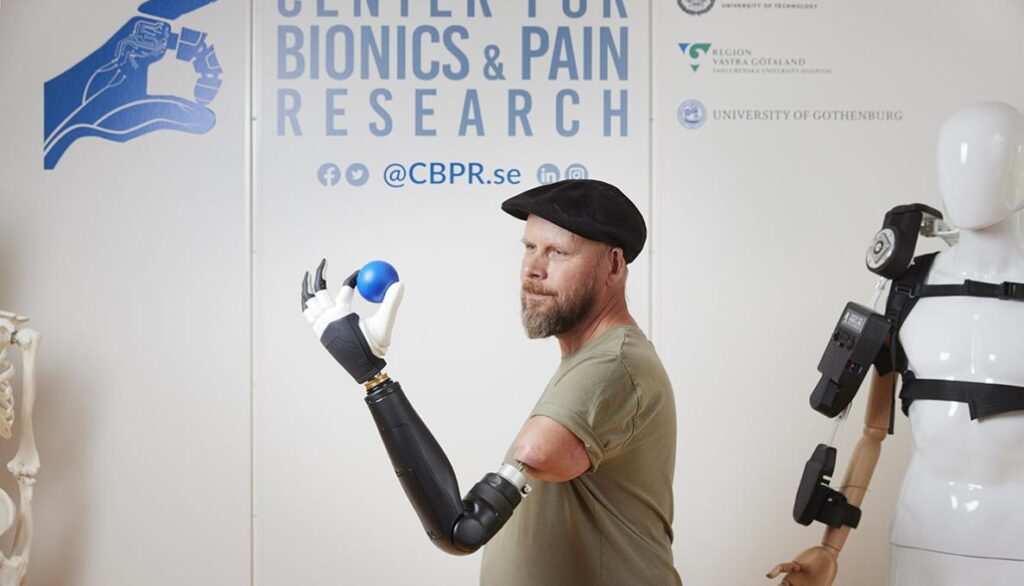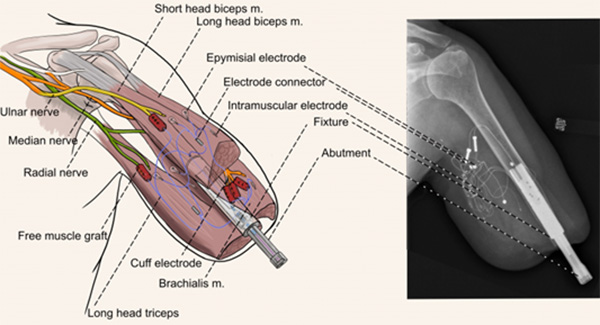Surgical and Engineering Innovations: Controlling Every Finger of a Bionic Hand

Arm amputees can use prosthetic arms and hands to use their lost limbs. However, many amputees find several issues preventing them from utilizing the prosthetic to help them daily. Some patients complain about irritation. Others cannot manipulate their artificial limbs, particularly if the parts involved are hands. Many are passive prostheses that look like natural arms, hands, or fingers and even mimic the natural skin color of the user. They are lightweight, but they do not have active movement.
First time for finger manipulation of a bionic hand
But big changes may happen soon. According to the findings published in the Science Translational Medicine, scientists and doctors observed how an arm amputation could manipulate each finger of a bionic hand like it was a natural part of his arm. Researchers from Sweden conducted the test. The head of research is Professor Max Ortiz Catalan. He is the Founding Director of Sweden’s Center for Bionics and Pain Research. He is also a Professor of Bionics at Sweden’s Chalmers University of Technology and the Head of Neural Prosthetics Research at Australia’s Bionics Institute.
The arm amputee’s ability was due to revolutionary engineering and surgical advancements that allowed the seamless merging of humans with machines. The new ability, a medical breakthrough, gives new possibilities and hope for amputees worldwide.
In the team’s study, they surgically modified an individual to integrate a skeletal implant and implanted sensors. AI algorithms translate the user’s intention to move the prosthesis.
Use of prosthetic limbs
Replacing a lost extremity is the primary purpose of prosthetic limbs. But most are difficult to control and usually unreliable because only a few movements are available. However, several research teams concentrate on developing functional prosthetic hands.
With the Swede research team’s innovative work to control bionic hands, engineers and healthcare providers utilize remnant muscles in the affected limb as the source of control. As there are still functioning muscles, the patients can still contract them at will, and they can tell the prosthetic hand what to do through the electrical activity generated by the contractions. A major problem faced by prosthetic arms and hands providers is when the amputation level is higher. For example, if it is above the elbow, not many muscles are left to command several robotic joints required to restore the arm and hand function.

Circumventing the issue
A multidisciplinary team of engineers and surgeons avoided the issue by reconfiguring the residual limb and incorporating sensors and a skeletal implant connecting with the prosthesis mechanically and electrically. The surgeons dissected the peripheral nerves and redistributed them to new muscle targets that become biological amplifiers. The process allowed the bionic prosthesis to access more information so the amputee could command several robotic joints when needed.
In their article, they described their process of how they rewired nerves to several muscle targets in a concurrent and distributed plan to improve prosthetic control. The key feature of their project is the possibility to utilize more refined surgical procedures clinically and embed sensors in the constructed neuromuscular parts at surgery time, enabling them to connect it to the prosthesis’ electronic system through an osseointegrated interface. The rest of the process depends on the AI algorithms.
In medical terms, osseointegration is attaching a titanium implant within the residual bone to anchor the device strongly without causing discomfort to the patient, compared to the common practice of socket attachment. Socket attachment usually compresses the residual limb, often causing pain on the sensitive part. Likewise, the socket is mechanically stable. Osseointegration ensures a more comfortable and efficient mechanical connection of the prosthetic device to the patient’s body.
The procedure’s success is rewarding to the research team because it establishes that their cutting-edge surgical and engineering invention can later provide a higher level of functionality for an arm amputee. Moreover, their achievement results from more than 30 years of slow, but continuous concept development, according to Dr. Rickard Brånemark, a leading expert on osseointegration for limb prostheses. He said he is proud of his contribution to the concept. Likewise, he conducted the interface’s implantation on the patient.
They had the surgery at the Sahlgrenska University Hospital, where the Center for Bionics and Pain Research is located. Dr. Paolo Sessu did the neuromuscular reconstruction procedure. Dr. Sassu also led Scandinavia’s first hand transplantation. He currently works at Italy’s Instituto Ortopedico Rizzoli.
They undertook their remarkable journey to create the prosthetic arm with the help of the incredible skills of bionic engineers at the Center for Bionics and Pain Research. Their contribution to the project allowed the medical team to integrate sophisticated implanted electrodes and new microsurgical techniques, providing single-finger control of the arm prosthesis, including sensory feedback.
The procedure was complex and took some time because they had to connect the transferred nerves progressively to their target hosting muscles. After the innervation process had advanced enough, the research team connected them to the prosthesis, which allowed the patient to control each finger of the prosthetic hand naturally. Their extended research allowed them to show how the innovative system responds to the patient’s daily life activities. However, they are not done yet since they are now focused on further improving the bionic hand’s controllability.